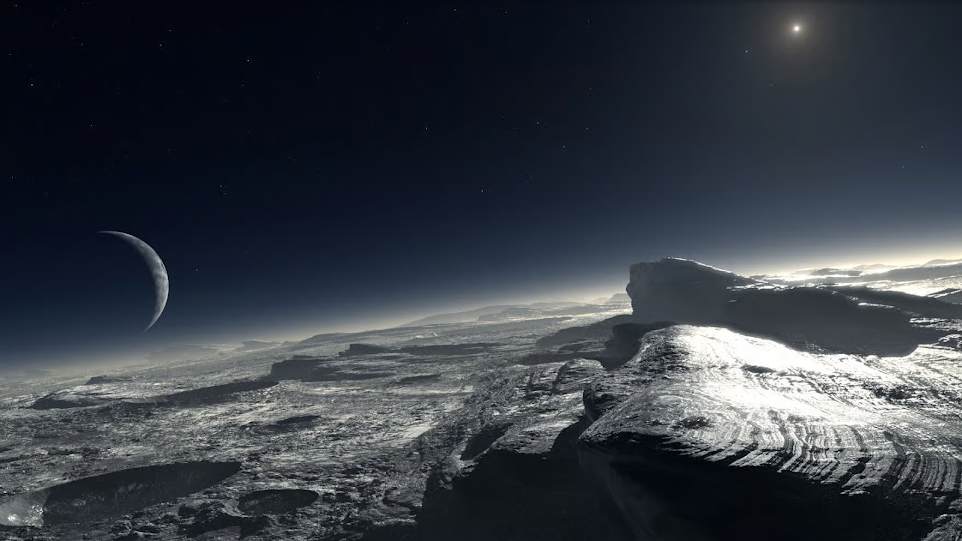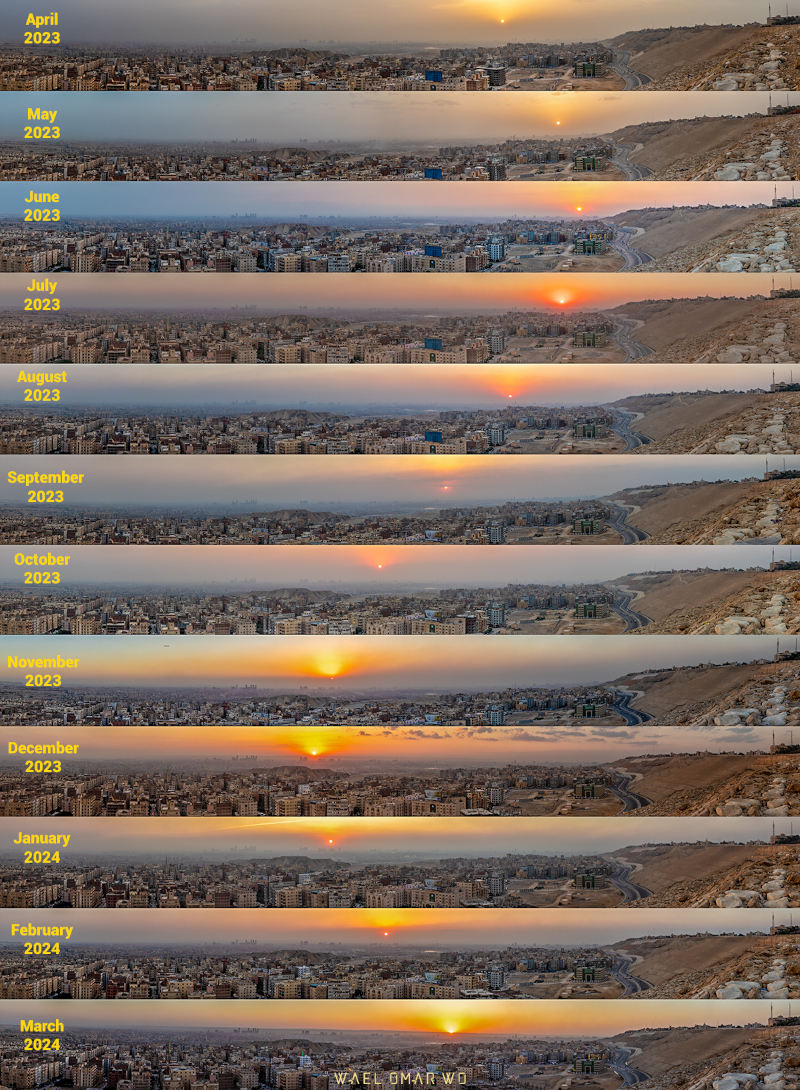Nombre total de pages vues
25/12/2024
LES PLUS BEAUX ASTRES DE LA VOIE LACTéE - Pluton : la planète naine
ASTRONOMY - Diamond Dust Sky Eye
Image Credit & Copyright: Jaroslav Fous
Explanation: Why is there a huge eye in the sky? Diamond dust. That is an informal term for small ice crystals that form in the air and flitter to the ground. Because these crystals are geometrically shaped, they can together reflect light from the Sun or Moon to your eyes in a systematic way, causing huge halos and unusual arcs to appear. And sometimes, together the result can seem like a giant eye looking right back at you. In the featured image taken in the Ore Mountains of the Czech Republic last week, a bright Moon rising through ice fog-filled air resulted in many of these magnificent sky illusions to be visible simultaneously. Besides Moon dogs, tangent arcs, halos, and a parhelic circle, light pillars above distant lights are visible on the far left, while Jupiter and Mars can be found just inside the bottom of the 22-degree halo.
24/12/2024
ASTRONOMY - Fox Fur, Cone, and Christmas Tree
2024 December 24
Image Credit & Copyright: Tim White
Explanation: What do the following things have in common: a cone, the fur of a fox, and a Christmas tree? Answer: they all occur in the constellation of the Unicorn (Monoceros). Considered as a star forming region and cataloged as NGC 2264, the complex jumble of cosmic gas and dust is about 2,700 light-years distant and mixes reddish emission nebulae excited by energetic light from newborn stars with dark interstellar dust clouds. The featured image spans an angle larger than a full moon, covering over 50 light-years at the distance of NGC 2264. Its cast of cosmic characters includes the Fox Fur Nebula, whose convoluted pelt lies just to the left of the image center, bright variable star S Mon visible just to the right of the Fox Fur, and the Cone Nebula near the image top. With the Cone Nebula at the peak, the shape of the general glow of the region give it the nickname of the Christmas Tree Cluster, where stars are tree ornaments.
23/12/2024
ASTRONOMY - Christmas Tree Aurora
2024 December 23
Image Credit & Copyright: Jingyi Zhang
Explanation: It was December and the sky lit up like a Christmas tree. Shimmering, the vivid green, blue, and purple auroral colors that formed the tree-like apparition were caused by high atmospheric oxygen and nitrogen reacting to a burst of incoming electrons. Collisions caused the orbital electrons of atoms and molecules to jump into excited energy states and emit visible light when returning to their normal state. The featured image was captured in Djúpivogur, Iceland during the last month of 2023. Our Sun is currently in its most energetic phase of its 11-year cycle, with its high number of active regions and sunspots likely to last into next year. Of course, the Sun has been near solar maximum during this entire year, with its outbursts sometimes resulting in spectacular Earthly auroras.
22/12/2024
ASTRONOMIE - LES PLUS BEAUX ASTRES DE LA VOIE LACTéE - Antiope : l’astéroïde double
SANTé/MEDECINE - LES INGREDIENTS A BANNIR AU SUPERMARCHé - Les nitrites et nitrates
ASTRONOMY - The Local Fluff
2024 December 22
Illustration Credit: NASA, SVS, Adler, U. Chicago, Wesleyan
Explanation: The stars are not alone. In the disk of our Milky Way Galaxy, about 10 percent of visible matter is in the form of gas called the interstellar medium (ISM). The ISM is not uniform and shows patchiness even near our Sun. It can be quite difficult to detect the local ISM because it is so tenuous and emits so little light. This mostly hydrogen gas, however, absorbs some very specific colors that can be detected in the light of the nearest stars. A working map of the local ISM within 20 light-years, based on ongoing observations and particle detections from the Earth-orbiting Interstellar Boundary Exporer satellite (IBEX), is shown here. These observations indicate that our Sun is moving through a Local Interstellar Cloud as this cloud flows outwards from the Scorpius-Centaurus Association star forming region. Our Sun may exit the Local Cloud, also called the Local Fluff, during the next 10,000 years. Much remains unknown about the local ISM, including details of its distribution, its origin, and how it affects the Sun and the Earth. Unexpectedly, IBEX spacecraft measurements indicate that the direction from which neutral interstellar particles flow through our Solar System is changing.
21/12/2024
ASTRONOMY - A Year in Sunsets
2024 December 21
Image Credit & Copyright: Wael Omar
Explanation: A year in sunsets, from April 2023 to March 2024, track along the western horizon in these stacked panoramic views. The well-planed sequence is constructed of images recorded near the 21st day of the indicated month from the same location overlooking Cairo, Egypt. But for any location on planet Earth the yearly extreme northern (picture right) and southern limits of the setting Sun mark the solstice days. The word solstice is from Latin for "Sun" and "stand still". On the solstice date the seasonal drift of the Sun's daily path through the sky appears to pause and reverse direction in its annual celestial journey. Of course the Sun reaches a stand still on today's date. The 21 December 2024 solstice at 09:21 UTC is the moment of the Sun's southernmost declination, the start of astronomical winter in the north and summer in the south.
20/12/2024
ASTRONOMIE - Collision entre deux planètes naines
SANTé/MEDECINE - Le Remède de Grand-Mère Efficace Contre l'Arthrose - les Rhumatismes et les Douleurs Articulaires.
ASTRONOMY - IRAS 04302: Butterfly Disk Planet Formation
2025 September 8 IRAS 04302: Butterfly Disk Planet Formation Image Credit: NASA , ESA , CSA , Webb ; Processing: M. Villenave et al....

-
2022 September 26 All the Water on Planet Earth Illustration Credit: Jack Cook, Adam Nieman, Woods Hole Oceanographic Institution ; Data ...
-
2021 August 11 Mammatus Clouds over Saskatchewan Image Credit & Copyright: Michael F Johnston Explanation: When do cloud bottoms appe...









